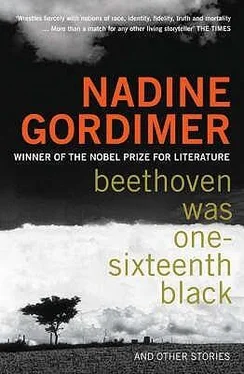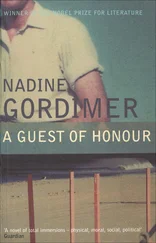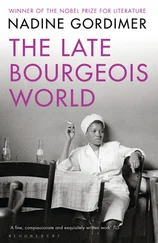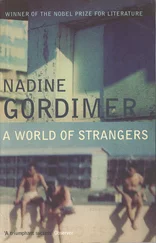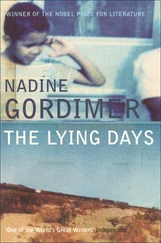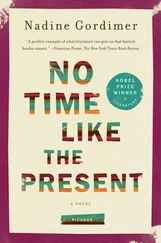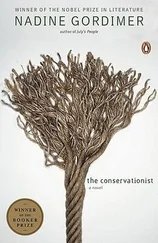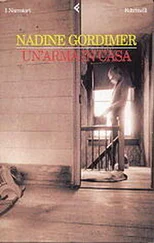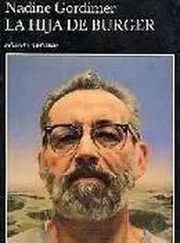She walked block after block before remembering to look for a taxi or bus stop. Should have asked if there was perhaps a photograph from that time. Could have, since the terms of the visit had been violated. But no.
You know the one you knew. Cannot know the other, any other. Allesverloren.
THE parrot’s been thirty years an attraction in this restaurant, but of course nobody knows how old it is. A parrot can live for a century, it’s said — probably an old seafarer’s tale; didn’t the birds used to be sailors’ companions on ancient lonely voyages? They were brought to Europe from Africa, the Amazon, everywhere what was thought of as The World sent ships lurching, venturing the seas to worlds known by others. Those others couldn’t speak, so far as the sailors were concerned — that is, not the language of the sailors, whatever it might be. But the bird could. Very soon it asked questions, made demands, cursed, even laughed in their language. The world of others talked back from what The World was set to make of those others — its own image. The sailors didn’t know — does anyone — how a bird can speak. But it did. And as if it understood, at least the laughter, the abuse. Else how could it have produced the expression of these?
That’s all centuries ago, the restaurant parrot must have come from a pet shop, although Madame Delancy remembers it was given to her husband by some friend. — We would never have bought a parrot! For a restaurant! It’s not a zoo! — But she gives a tilt-of-the-head greeting to the parrot as to a member of the staff, or rather a member of the family because this is a restaurant in the South of France of the usual village kind where the employees are all descendant from the chef father and the hostess mother to sons and daughters and even grandchildren who come by on their velos to eat and help clear tables, after school.
The parrot’s plumage is green and yellow, with a touch of red somewhere, a grey curved beak that, because the creature’s been there as long as the founding habitués at their tables, seems to have aged that way like some old man’s nose. English tourists and those retired from their cold shires, by their culture amateur ornithologists, know that the parrot is African, and also know him by name, Auguste. But the most constant clientele, out as well as in season, is local. The older habitués, native and foreign, have seen them, heard them grow up, from the time of baby carriages, the racing past tables chasing balls, to the sexy tattooed biceps, the giggling and flirting over cigarettes, the transformation of bared be-ringed navels to the swelling mounds of pregnancy.
In season the parrot in his domed cage is outdoors under a tree on the territory of the Place where the restaurant spreads its tables and umbrellas. Out of season he is thrust away with summer in a corner of the restaurant if the weather is bad; a sort of hibernation imposed on him that is surely contrary to the cycle of his species, wherever its origin. Sometimes there’s even his night-time cloth thrown over the roof of his cage. Take a nap. But most of the year, in that mild climate, he is at his post outdoors in the middle of the day, and clients favour eating there. — Auguste! Hullo! — People call out as they stroll to be seated. — Auguste! Bon jour! — As if they must be acknowledged by him, the sign, the character of their choice of where to eat and drink, as some feel prestige in being recognised by a maître d’hôtel. And with the assertion of dignity of a maître d’ sometimes he calls back or murmurs in that mysterious throat of his, Hullo bon jour. Sometimes not. He pretends to be busy attending to some displacement of his plumage or shifting the precise prehensile grip of his claws. They, like his beak, have taken on the human characteristics of the clients beyond his cage but long around him — the skin of the claws of his kind of hands furrowed, hardened, cross-wrinkled by mutual ageing.
Parents send their children from the tables to greet him. Go and see the parrot, say something to it, it can talk, you know. So the adults get rid of infant chatter and whining. Don’t put your finger through the bars! This’s not a kittycat! Go — see that parrot over there?
The children surround the cage and stare. His half-lidded insignificant eyes — he is all beak, all the attribute of what takes food and utters — look back at them as a public figure endures the sameness of the face of the crowd. He won’t speak although mummy and daddy say so and what mummy and daddy say must be true. Right. Auguste is presumed to be a male because of his raucous voice: suddenly he obliges with raging shrieks, the yells of a street fight. Some children run away, others laugh and tease him for more. It’s as if inappropriate violence has brought an unsuitable reminder to the pleasant security of choosing from the menu with the member of the chef’s family offering advice of the specials of the day. Madame Delancy may even come out, shrugging and smiling, gently to direct the taunting children away. Perhaps she has the segment of a tangerine or an open mussel in her fingers to soothe the bird. (When clients are astonished at the spectacle of a parrot enjoying moules marinières she cocks her head and says — iodine — maybe that’s why he lives so long.) He will take the titbit and continue to grumble with quiet indignation to himself, while apparently listening acutely to all around him, for as suddenly as he flew into a rage he enters unbidden across all the conversations the clichés of his vocabulary over the clichés of theirs. — Santé cheers wha-tt! really? well-l so! so-oo ça va? come on! tu parles! love… ly bye now ça va? — All the nuances of hilarity, derision, irritation, disbelief, boredom are faithfully introduced, reproduced. The inflections of what must be called his voice adapt to whether he’s having his say in French or English — it seems the advent of German and Scandinavian clients has not, in this latter part of his thirty years, enabled him to reproduce their locutions.
But now there’s change coming to the charming village — of course it has kept its character through many changes, longer than the legendary longevity of a parrot. The revolution that sent the monks fleeing from their monastery whose cloisters are now the garden bar of its avatar as a five-star hotel; the German occupation in the 1940s in which young men of village families still extant (look at those baby carriages) were killed in the Resistance — there’s a street where one was born, named after him. There has been the restoration of rotting beams in old houses by Scandinavians, Germans and the English, who in the boom years of Europe discovered a delightful unspoilt place to acquire a historic maison secondaire.
This latest change has a finality about it — as no doubt they all have had for whoever lived in or visited the village ‘as it used to be’. Before. For each individual another ‘before’. But one of the finalities, now, is the announced closing of the restaurant of the parrot. After thirty years! Madame Delancy knows she owes an explanation to the habitués, whether the survivors of the lesbian community from the Twenties, the regular summer visitors, or the youngsters who take their right as a species of collateral grandchildren to sit smoking, jeering and chattering for more than an hour over a single coffee or a shared icecream. The chef, her dear husband who (everyone has heard related many times) learned his skills in the kitchens of Maxim’s in Paris, has been cooking for more than forty years. For some while they have had a small apartment with a view of the sea, ready in preparation for this time that has come. So the tables with their white napery and flowers, the chairs on which everyone is at ease, raising glasses, all will be folded away, the ice buckets where bottles of Provençal Rosé are powdered with chill, and the chef’s incomparable Tarte Tatin that is displayed among desserts — all will disappear. No. No? A German gentleman has bought the restaurant. As if one can ‘buy’ a restaurant whose character has been formed over thirty years. A German. Sauerkraut and sausages. Or worse, something imagined as international French cuisine by those who are not French.
Читать дальше
